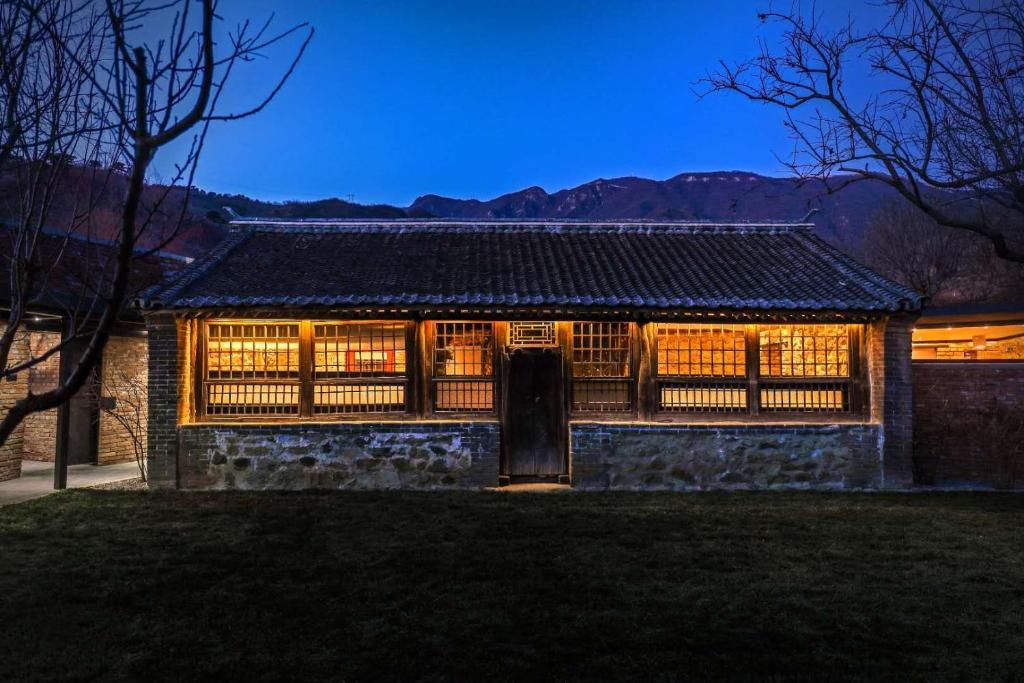Book your Stay at the most Instagrammable Hotels around Great Wall in China!
We have searched on Instagram for the coolest stays and hotels in Great Wall and put them together in this list so you can book them directly for your next trip to China !
About Brickyard Retreat at Mutianyu Great Wall
Located in Beijing, just 1.2 kilometers from Mutianyu and 4.9 kilometers from the Jiankou area of the Great Wall, Le Brickyard Retreat at Mutianyu Great Wall is built with total respect for the environment. It offers its guests spacious rooms with beautiful design and panoramic views of the mountainous terrain of the area. Housed in several historic buildings, guests enjoy free access to a gym and wifi. All of the homes are unique and have different styles. All rooms are also equipped with air conditioning, heating, a dining area and a private bathroom. If you stay at this hotel, you will be at the foot of the Great Wall, just a 5-minute drive from Mutianyu. Guests can rent a car to explore the surrounding area, enjoy a relaxing massage at the spa or take a stroll through the hotel's private garden to unwind. The spa's whirlpool is open all year round and offers a breathtaking view of the Great Wall. Luggage storage and hiking maps are available at the reception. If you're traveling with the family, there's a playroom and a dedicated children's playground. The hotel also has a souvenir store and a petanque court. Private parking spaces are available free of charge upon reservation. In addition, you can enjoy homemade noodles at the Xiaolumian Noodle Shop or Western dishes and creative cuisine at the Schoolhouse. For refreshments, there is a bar. It is a 45-minute drive to the Ming Tombs and an hour's drive to Beijing International Airport.
About Sansa Village Boutique Hotel at Mutianyu Great Wall :
Situated in Huairou, Sansa Village Boutique hotel at Mutianyu Great Wall invites you to stay just a few steps away from the seventh wonder of the world. It offers a restaurant, a bar, a common lounge and a beautiful garden. You will have access to family rooms and a sunny terrace. To ensure a warm welcome, the hotel offers several services including a 24-hour reception and room service as well as a tour desk. The staff will be happy to inform and advise you on your choice of visits and tourist activities! All rooms have balconies and are decorated with rough stone, brick, dark tile or parquet flooring. Each morning, guests are offered an American or a la carte breakfast. On site, guests can enjoy the waters and bubbles of the hot tub. In the surrounding area, guests can enjoy various activities such as hiking. Finally, you can stay 8 kilometers away from Shengquan Temple and 9 kilometers away from Hung Lo Temple. For an additional fee, the hotel can also provide you with a shuttle service to Beijing International Airport.
About Home of the Great Wall
Set back in the mountains, with a unique and picturesque location near the Great Wall, Home of the Great Wall offers rooms at the foot of the hill. Overlooking the Mutianyu area, the hotel is built in a mix of rustic and modern style and has three restaurants. Composed of contemporary brick and stone walls, the air-conditioned rooms are equipped with a TV, electric kettle and refrigerator. Some also have a small, deep pool for swimming. Their private bathrooms include a shower and hot water. On-site parking is free and there are various karaoke rooms, ping-pong tables and badminton courts. To ensure a warm welcome, the reception is open 24 hours a day and also provides luggage storage and ticketing services for your sightseeing activities. The Western Restaurant and XinShuanQuan Restaurant offer Western, Chinese and regional dishes. It is a 30-minute drive to Yan Xi Lake and over an hour's drive to Beijing International Airport.
About Yanqi Hotel, Managed by Kempinski
Localized only 15 minutes' walk from Yanqi Lake, Yanqi Hotel, Managed by Kempinski is located on Yanqi Island, about 10 kilometers from the Great Wall. Surrounded by the Yanshan Mountains, the hotel offers sumptuous accommodations with free and unlimited wifi. In addition, guests can enjoy a beautiful indoor pool, entertainment facilities and various services. All of the rooms contain a TV, air conditioning and a balcony. The dining area is equipped with a refrigerator, minibar, IPOD docking station and electric kettle. The En suite bathroom also comes with a shower, bathtub and hairdryer. Here, you will have the opportunity to rejuvenate with massages, exercise in the gym or sing in the karaoke rooms and play games in the game room. If you wish, a range of activities can be organized by the hotel, including hiking and biking. If you are traveling with your family, a children's club and a daycare service for the little ones are available. The various restaurants on site offer a wide selection of tasty Cantonese, Szechuan and Western dishes. Finally, the hotel is a 20-minute drive from Mutianyu Great Wall and an hour's drive from Capital International Airport.



